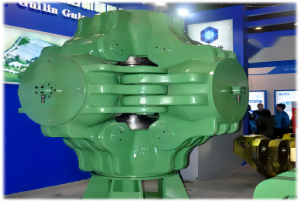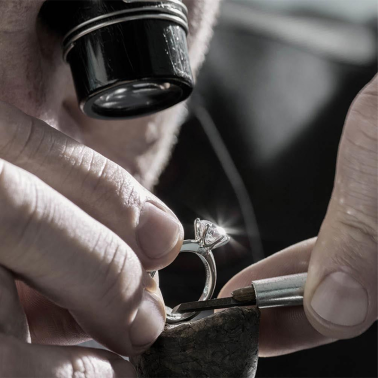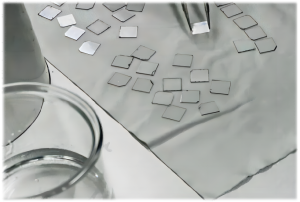How Are Lab Grown Diamonds Made?
Diamonds, one of the hardest and most brilliant gemstones in nature, have always been cherished by people. However, the rarity and high cost of natural diamonds have made them inaccessible to many. To address this issue, methods for lab grown diamonds have been developed to meet market demand.
From the production of the first cultivated diamond in 1954 to today, a span of 70 years, scientists have invented numerous methods for lab grown diamonds. Ultimately, two methods have emerged as the mainstream production techniques: High Pressure High Temperature (HPHT) and Chemical Vapor Deposition (CVD). Other methods have not become mainstream due to various technical or cost factors.
High Pressure High Temperature (HPHT)

1.Principle: In a high-pressure, high-temperature environment, carbon atoms are exposed to a metal catalyst, causing them to form diamond crystals. This method simulates the natural conditions deep within the Earth, laying the foundation for large-scale production of lab grown diamonds.
2.Origin: In the 1950s, Dr. Hall of General Electric in the United States led a team to achieve a breakthrough in diamond cultivation technology, resulting in the HPHT method.
3.Development: Initially, HPHT diamonds were only used for industrial purposes. However, with continuous improvement and optimization, HPHT technology began to be applied to commercial production. HPHT diamonds have gradually matched natural diamonds in quality while being cheaper and faster to produce. Over time, HPHT diamonds have gained a foothold in the gemstone market, becoming a significant alternative to natural diamonds.
4.Current Status: Today, HPHT is one of the primary methods for producing lab grown diamonds, with relatively mature technology capable of producing high-quality diamonds. With technological advancements, HPHT technology continues to innovate and develop. Modern HPHT devices use advanced materials and processes to achieve higher pressures and temperatures, producing larger and purer diamond crystals. HPHT technology is also used to improve the quality of natural diamonds, such as removing internal impurities and enhancing color.
Chemical Vapor Deposition (CVD)

1.Principle: This method uses gaseous chemical substances to deposit carbon atoms onto a substrate under appropriate conditions, forming diamond crystals. By controlling the chemical composition and reaction conditions in the gas phase, high-quality diamond crystals can be grown.
2.Origin: The concept of CVD dates back to the late 1950s and early 1960s. Scientists began attempting to lab grown diamonds using gas-phase chemical reactions in laboratories. Early attempts faced numerous challenges, such as controlling reaction conditions and selecting carbon sources, resulting in low efficiency and unstable quality. With further research and optimization, CVD technology made significant progress. By the late 1960s and early 1970s, scientists in the US and USSR succeeded in synthesizing small diamond crystals, marking the advent of CVD technology.
3.Development: From the 1980s onward, further research and improvements in CVD technology, along with optimization of reaction conditions, catalysts, and carbon sources, led to its commercial application. Initially, CVD was widely used for producing diamond films for coatings and tool manufacturing. Eventually, the focus shifted to synthesizing large diamond crystals. In 1988, Japanese researchers successfully synthesized carat-sized CVD diamonds, marking a new milestone.
4.Current Status: With a deeper understanding of reaction mechanisms and material control, and continuous improvements in equipment technology, the quality and scale of CVD diamonds have significantly improved. CVD has become a mature industrial production method, widely used in jewelry, cutting tools, optical devices, and more. CVD technology is also used to produce high-quality diamond single crystals for applications in electronics and optoelectronics.
Other Production Methods
1.Physical Vapor Deposition (PVD): Similar to CVD, PVD uses physical processes instead of chemical reactions to form diamond crystals. In PVD, particles (usually carbon atoms) are deposited onto a substrate through evaporation or sputtering, forming diamond films or crystals under appropriate conditions.
2.Laser Chemical Vapor Deposition (LCVD): This method uses a laser beam to activate chemical reactions, depositing carbon atoms onto a substrate to form diamond crystals. LCVD allows for precise control over the crystal growth process.
3.Metal-Organic Chemical Vapor Deposition (MOCVD): Similar to CVD, MOCVD uses metal-organic compounds as the carbon source. In this process, metal-organic compounds decompose to produce carbon atoms, which then deposit on the substrate to form crystals.
4.Plasma-Enhanced Chemical Vapor Deposition (PECVD): Combining the advantages of CVD and plasma technology, PECVD uses plasma to activate the feed gas, enhancing reaction activity. This results in faster and more uniform diamond growth at lower temperatures.
While these methods are currently used primarily for producing diamond films, electronic devices, and micro/nano fabrication due to cost or technical limitations, it is believed that with technological advancements, they may eventually be applied to gemstone-grade diamond cultivation, similar to HPHT and CVD.
In summary, the production of lab grown diamonds has evolved from non-existence to complexity. With ongoing technological advancements and increasing market demand, synthetic diamond production technologies will continue to improve and innovate, offering more choices for the diamond market.




